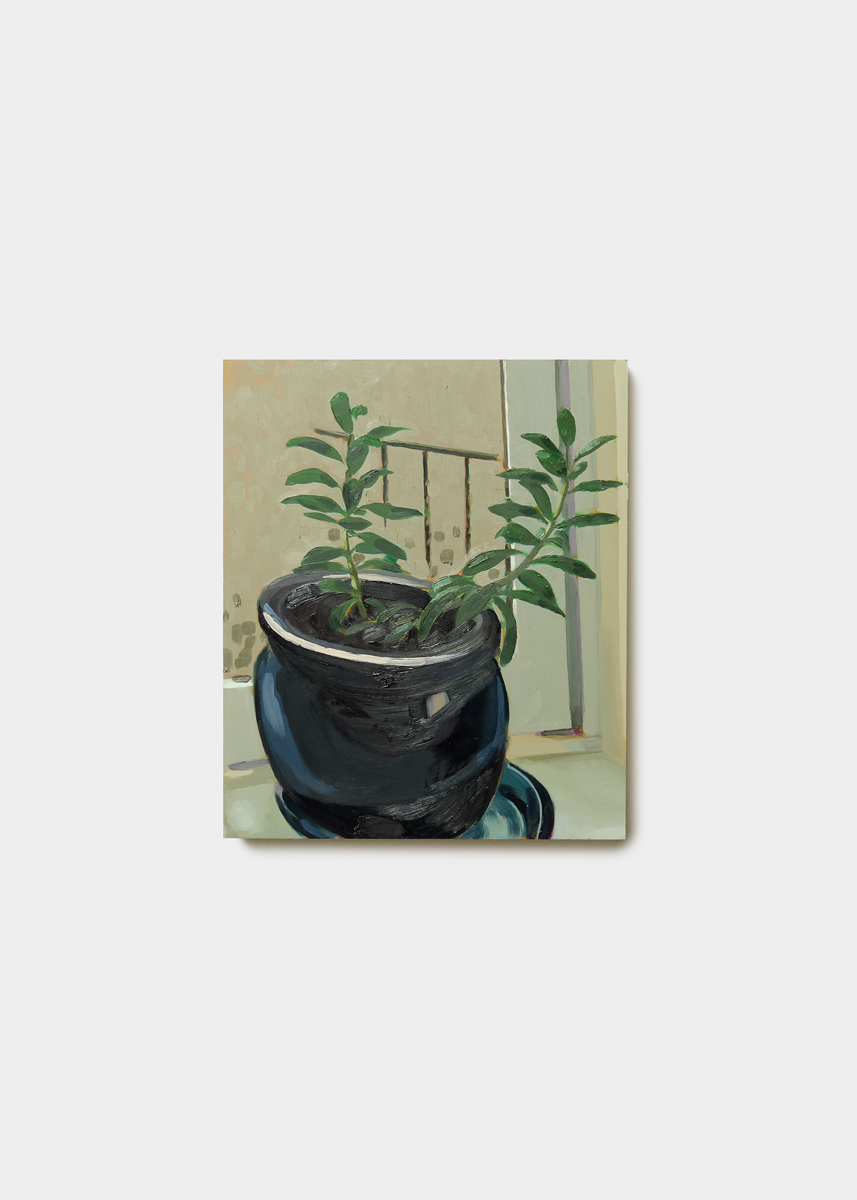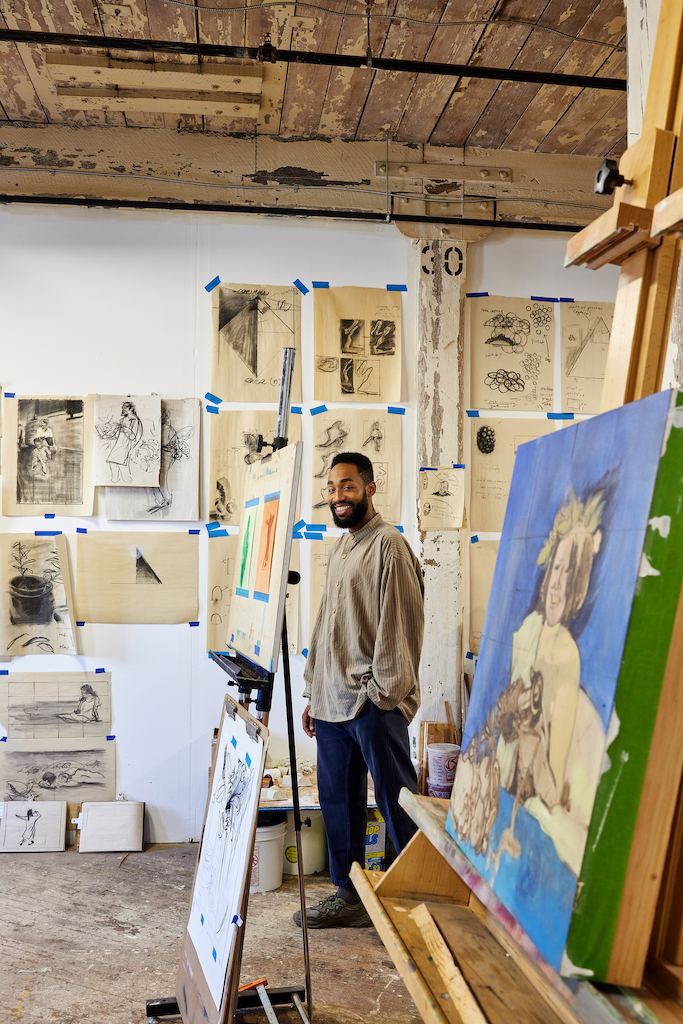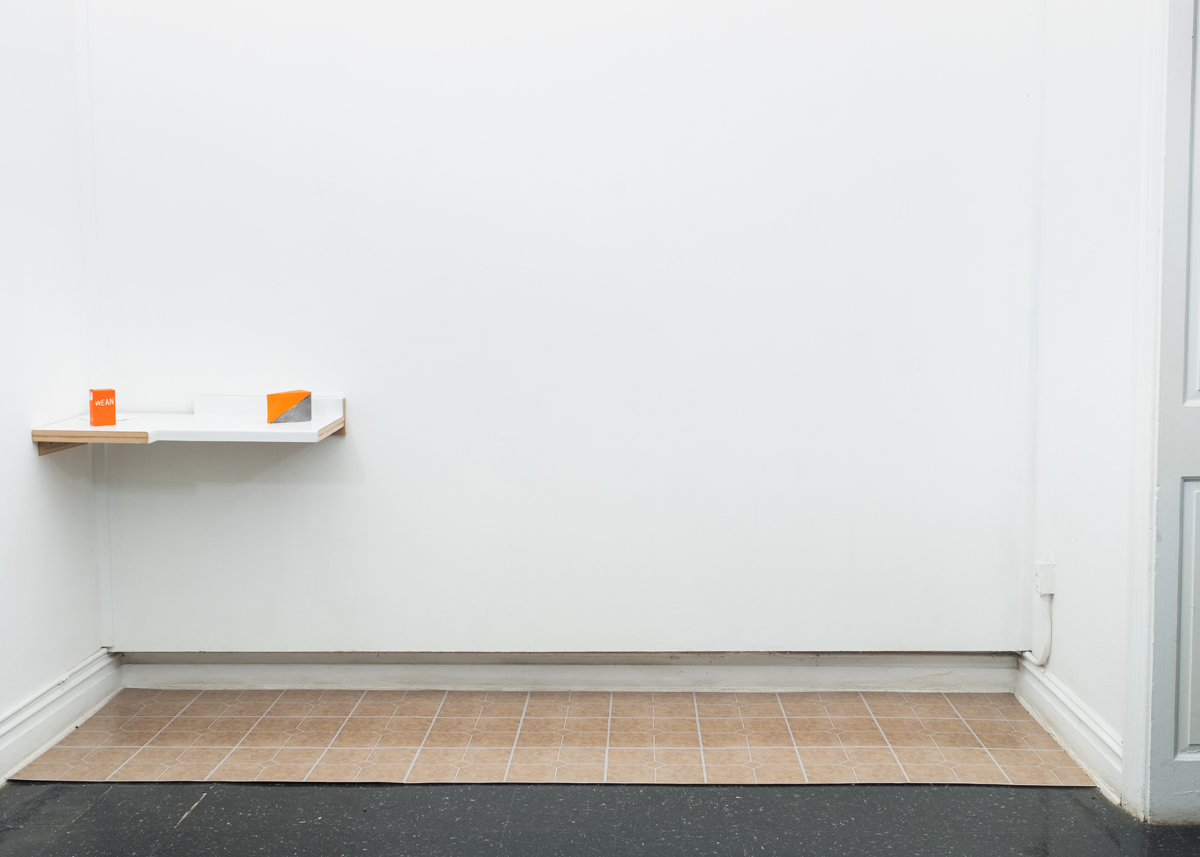Kyrae Dawaun first fell in love with the luminosity of oil paint. This high school crush is still evident today in his Highlandtown studio, which has an organized arrangement of Kremer pigments and binders on the same wall as a large print out of the periodic table of elements. He explains, after dabbling for a time with other painting media, “I came back to oil, my first love, because it’s how I move—it’s slow, rich, flexible and giving. I needed this generosity and consistency after so much searching.” Still, Dawaun cannot help but try to improve his paint, working with the chemistry of color to try to “dive deeper into the wonder of pigment and paint matter,” he says.
The 2021-3 Hamiltonian Fellow adores organic pigments and celebrates the very thing that many artists fear in paints that are made from materials like plant matter or soil instead of chemical compounds made in a lab—fugitive color. A fugitive pigment is one that will change with time (becoming lighter or darker in value or breaking) when exposed to common environmental factors such as sunlight, humidity, or pollution. Dawaun says, “There is something super beautiful about the fugitivity of certain colors. With organic pigments, you have a greater access to that; they’re gonna be a bit more fleeting in some way.” For the artist, materials that are ephemeral contain a looseness that is compelling, and he enjoys “calculating the spirit of things to find their own way to balance,” he relays.
Everywhere in Dawaun’s studio is a sense of play and it’s clear, even though the artist has had a steady art practice since high school and then attended two prestigious art institutions—VCU in Richmond for graduate school, the Corcoran College of Art and Design in Washington, D.C for undergrad—he still feels like he hasn’t yet put in all the time necessary to truly perfect what he is working on.
Discussing his work, Dawaun describes himself as a “a passionate student” of his process and uses active words often borrowed from the dance world to describe how he flows (or as he says, “twirls”) from one idea to another, often taking one element from a sketch and recomposing it again like a choreographer reworks a phrase of music. And yet, part of perfecting a process is knowing when a work is done, and Dawaun is absolutely resolute in recognizing completion in his work. He explains, “When I finally get to the one that I think it was supposed to be, it’s ready.”














